As of 30 June 2021, environmental energy had invested in 217 projects, commanding a total investment of approximately RMB86.792 billion, and undertook 1 O&M project. These projects are designed to have an annual household waste processing capacity of 49,019,500 tonnes, which is expected to generate annual on-grid electricity of 16,482,010,800 kWh, an annual food and kitchen waste processing capacity of 2,131,600 tonnes, an annual sludge treatment capacity of 321,200 tonnes, and an annual medical waste processing capacity of 10,950 tonnes.
At the Group's waste-to-energy projects, gas emissions fully comply with relevant national standards, with the daily average level of online monitored gas emissions superior to the Euro 2010 standard. Treatment of leachate from these projects comply with relevant standards relating the reuse and discharge of leachate.
Projects in Operation
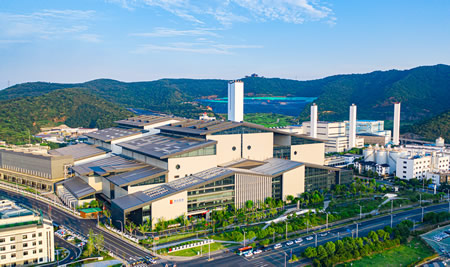
Suzhou Waste-to-energy Project is Everbright Environment's first waste-to-energy project, which has been awarded the national AAA-rated waste-to-energy project. Phases I, II and III of the project have a combined designed daily waste processing capacity of 3,550 tonnes. The project is currently undergoing dismantling and redevelopment work, as well as upgrading work, to boost the designed daily waste processing capacity to up to 6,850 tonnes. As the first municipal environmental protection project to be recognised as both a national environmental science popularisation and education hub and an industrial tourism attraction in China's waste-to-energy industry, the project was dubbed a "Garden-like Waste-to-energy Plant" by CCTV.
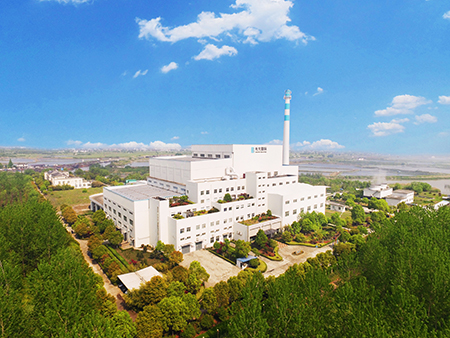
Yixing Waste-to-energy Project has a total designed daily waste processing capacity of 2,200 tonnes. It is Everbright Environment's first quality waste-to-energy project to be developed domestically. The project adheres to the company principle of "Producing Quality Projects and Building a Quality Brand" to achieve the harmless treatment, reduction and reuse of household waste in Yixing City.
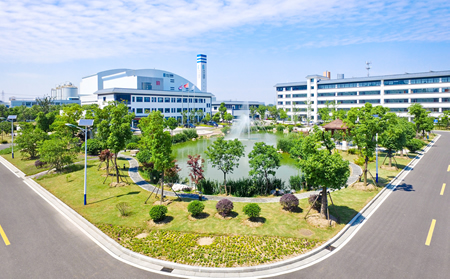
Jiangyin Waste-to-energy Project have a combined designed daily waste processing capacity of 2,200 tonnes. The project has taken the lead in terms of deploying a high parameter reheating unit, and stands as an example of the synergetic treatment of waste and sludge domestically. The project is among the first batch of circular economy demonstration sites in Jiangsu Province and has won the "Taihu Lake" Quality Project Award.

Changzhou Waste-to-energy Project has a designed daily waste processing capacity of 800 tonnes. Being awarded as the national AAA-rated waste-to-energy project, it is China's only waste-to-energy plant that is located most close to residential communities, operating in harmony with nearby communities that have around 100,000 residents. The project is a landmark of Changzhou which reflects the city's outstanding municipal management, and is also a benchmark for China's waste-to-energy industry.
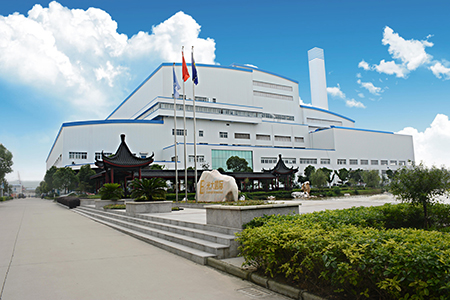
Zhenjiang Waste-to-energy Project Phases I and II have a combined designed daily waste processing capacity of 1,400 tonnes. It is a United Nations' Clean Development Mechanism (CDM) project, which has successfully installed the first full-set grate furnace developed by Everbright Environment. The project is not only a waste treatment facility but also a science popularisation and education hub and an industrial tourism attraction.

Suqian Waste-to-energy Project Phases I and II have a combined designed daily waste processing capacity of 1,000 tonnes. It is Everbright Environment's first waste-to-energy project in northern Jiangsu Province, and is also a demonstration project for cross-regional waste treatment in the province.
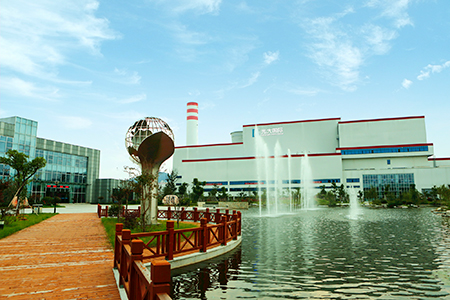
Nanjing Waste-to-energy Project Phases I and II have a combined designed daily waste processing capacity of 4,000 tonnes. Being awarded as the national AAA-rated waste-to-energy project and the AAA-rated waste-to-energy project in Jiangsu Province, the project has become a benchmark of green development in the industry due to its advantages, including its beautiful gardens, high emission standards, people-oriented environmental management, strong international reputation and outstanding environmental protection education.
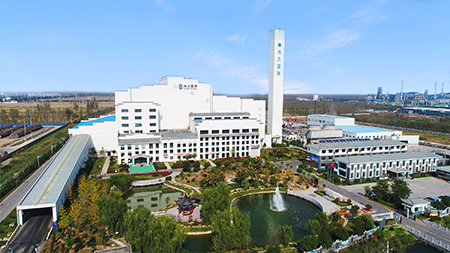
Pizhou Waste-to-energy Project Phase I and II have a total designed daily waste processing capacity of 1,200 tonnes. With its rich experience in admixing combustion of stale waste, the project has won a number of provincial and municipal honors, a testament to its "Garden-like factory" image. It has set a new benchmark for the waste-to-energy industry in Northern Jiangsu Province.
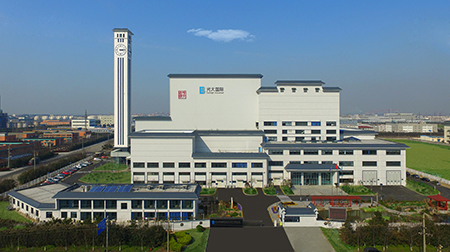
Changzhou Xinbei Waste-to-energy Project Phase I and II have a total designed daily waste processing capacity of 1,500 tonnes. Being awarded as the national AAA-rated waste-to-energy project and the AAA-rated waste-to-energy project in Jiangsu Province, the project is one of Changzhou City's key facilities for the harmless treatment, reduction and reuse of household waste. The grate furnace system at the project phase I was constructed and installed synchronously for the first time in the company's history, based on the technology imported from Germany's MARTIN GmbH für Umwelt. The construction of the project phase I lasted for 13 months only, marking a new record in Everbright Environment’s waste-to-energy project construction.
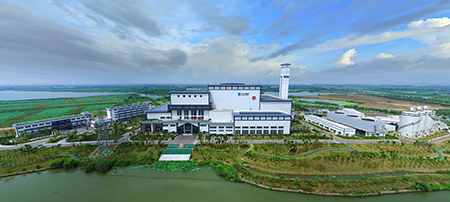
Wujiang Waste-to-energy Project has a designed daily waste processing capacity of 1,500 tonnes. Being awarded as the national AAA-rated waste-to-energy project and the AAA-rated waste-to-energy project in Jiangsu Province, the project is Everbright Environment first waste-to-energy project to adopt the "Dismantling and Redevelopment" construction model. The project is equipped with the company's first self-developed large-scale 750 tonnes/day grate furnace and has filled the void in the manufacturing of large-scale household waste incineration equipment in the country.
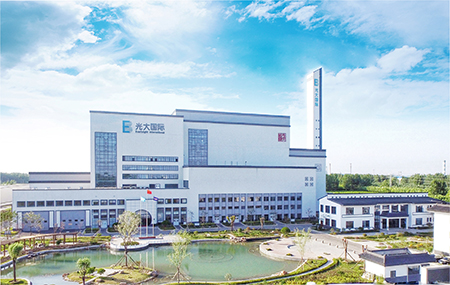
Pei County Waste-to-energy Project Phase I has a designed daily waste processing capacity of 500 tonnes. It is Everbright Environment's first project to adopt a single furnace and single turbine.
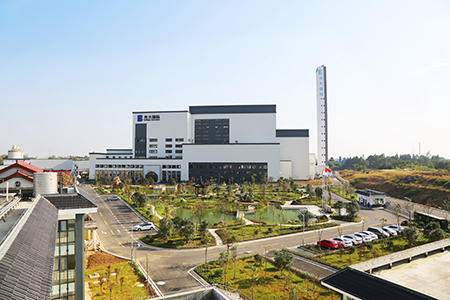
Gaochun Waste-to-energy Project has a designed daily waste processing capacity of 500 tonnes. It was a key livelihood project in Nanjing City in 2017, which has implemented an internationally-advanced light wave deodorisation system. The project is one of the first demonstration projects in China with a single set of equipment.
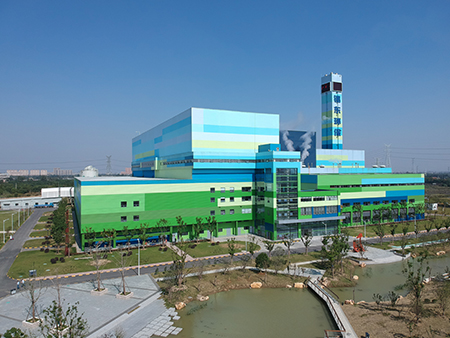
Wuxi Xidong Waste-to-energy Project has a designed daily waste processing capacity of 2,000 tonnes. It was the first project undertaken by Everbright Environment through an entrusted operation model, where the company is responsible for resuming construction as well as managing and operating the project. It is also the first waste-to-energy project to be re-activated at its original location in China. The successful operation of the project is a testament to Everbright Environment's brand impact as well as its comprehensive capability in solving the "Not in My Back Yard Effect" (NIMBY) issue, technology control and operations management.
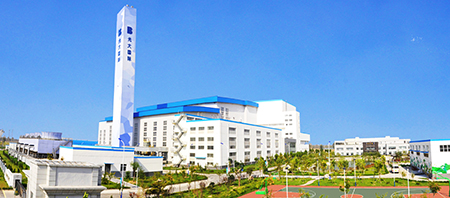
Ji'nan Waste-to-energy Project Phase I and Expansion Project have a designed daily waste processing capacity of 2,750 tonnes. It is the first and largest waste-to-energy project constructed by Everbright Environment in North China. The project was awarded the "Luban Prize" (National Quality Project) by the Ministry of Housing and Urban-Rural Development of the People's Republic of China.
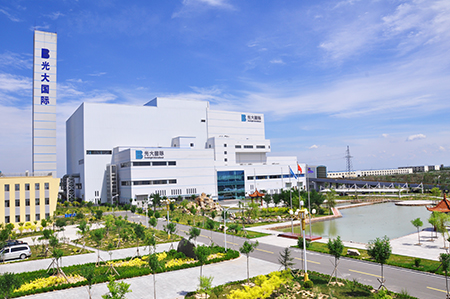
Shouguang Waste-to-energy Project Phase I has a designed daily waste processing capacity of 600 tonnes. It is the first waste-to-energy project that Everbright Environment invested in a county-level city in Shandong Province. The project is a benchmark waste-to-energy project in northern county-level cities as well as an environmental science popularisation and education hub.
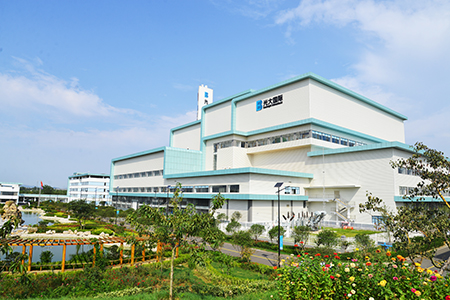
Rizhao Waste-to-energy Project Phase I and II have a combined designed daily waste processing capacity of 1,000 tonnes. The project phase I was awarded as the national AAA-rated waste-to-energy project. In addition, located at the east end of the New Eurasian Land Bridge, the project is one of the ten key livelihood projects in Rizhao City.
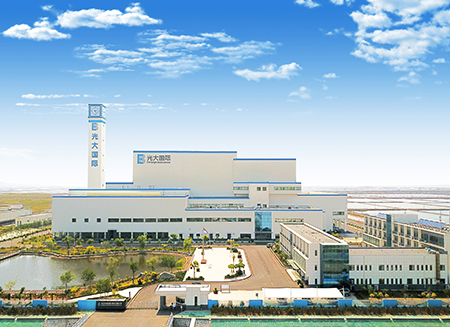
Weifang Waste-to-energy Project Phase I and II have a combined designed daily waste processing capacity of 1,500 tonnes. It has been awarded as the national AAA-rated waste-to-energy project. In addition, the project won the "2016-2017 National Quality Engineering Award", and is an environmental science popularisation and education hub in Weifang City.
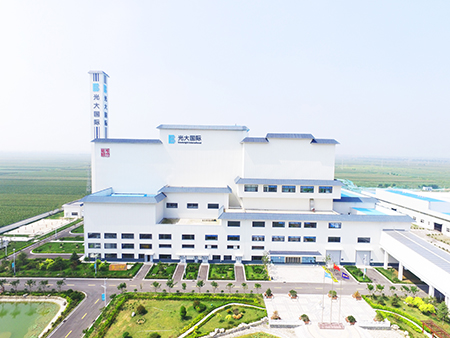
Pingdu Waste-to-energy Project Phase I and II have a total designed daily waste processing capacity of 900 tonnes. It is one of the key livelihood projects in Pingdu City and the first municipal-level environmental protection education hub.
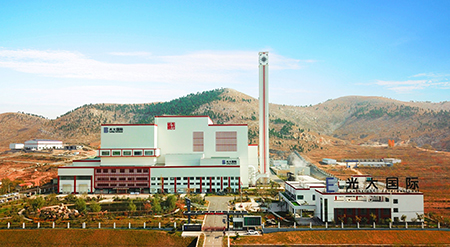
Tengzhou Waste-to-energy Project Phase I has a designed daily waste processing capacity of 700 tonnes. It is a demonstration project located alongside the Beijing-Shanghai high-speed rail route.
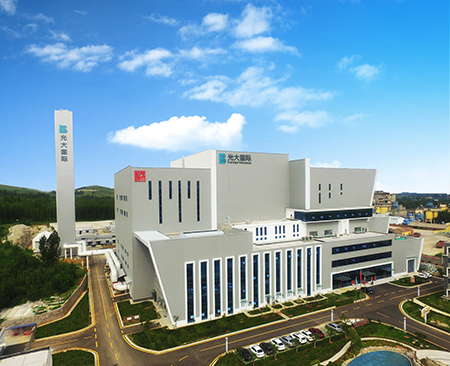
Laiwu Waste-to-energy Project Phase I has a designed daily waste processing capacity of 600 tonnes. It is Everbright Environment's first benchmark project that integrates food waste and household waste treatment. The project achieves a high level of synergy in terms of management, treatment techniques and facilities. It is also a demonstration project for resource sharing, shared energy utilisation and coordinated processing of waste.
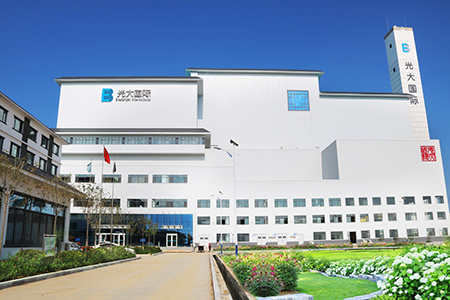
Xintai Waste-to-energy Project Phase I has a designed daily waste processing capacity of 600 tonnes. It is the first waste-to-energy PPP project constructed and invested by Everbright Environment in Shandong Province, and was listed among the second batch of exemplary PPP case studies by the National Development and Reform Commission, and the second batch of demonstration projects in Shandong Province.
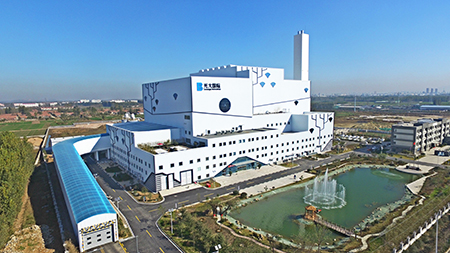
Ju County Waste-to-energy project Phase I has a designed daily waste processing capacity of 500 tonnes. Located in the ancient capital of Ju State - Ju County in Rizhao City, the project is a demonstration education hub that integrates environmental education, science popularisation, a demonstration of the circular economy and industrial tourism.
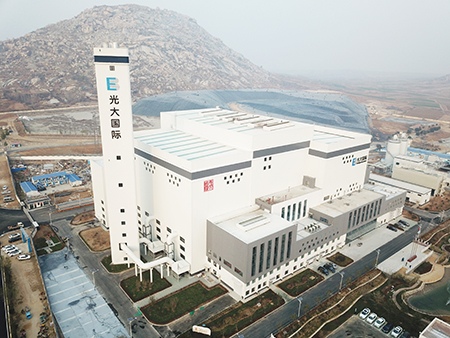
Zoucheng Waste-to-energy Project Phase I and II have a total designed daily waste processing capacity of 900 tonnes. The project is located in Zoucheng City, which is the hometown of Confucius and Mencius, and the birthplace of Confucian culture. The project well integrates environmental protection with tourism, industry and culture, bringing in elements of environmental protection to the sacred eastern city, and creating a new landmark of green development for the city.
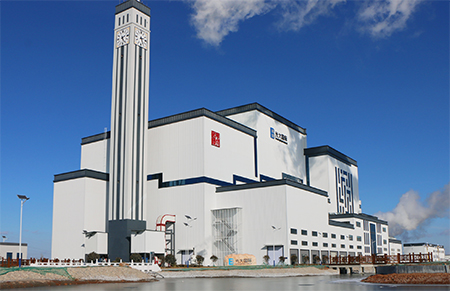
Laiyang Waste-to-energy Project Phase I has a designed daily waste processing capacity of 600 tonnes. It is the company's first project that has been equipped with high-speed turbine generator. The project is also responsible for the management of the local landfill sites following its commencement of operation.
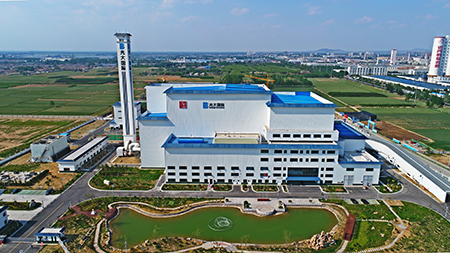
Linshu Waste-to-energy Phase I has a designed daily waste processing capacity of 500 tonnes. This project is located in the southernmost area of Shandong Province, a key municipal and livelihood project of Linshu County. It is also the "Environmental Education Hub" of Linyi City and the "2017 Outstanding Enterprise involving Foreign Business and Economics in Linyi City". Being regarded as a landmark in Linshu County, the project is dedicated to become a garden-like factory and one of the most influential enterprise in Linyi City.
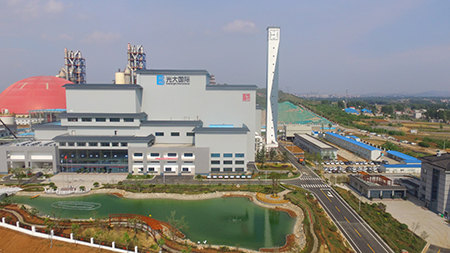
Fei County Waste-to-energy Project Phase I has a designed daily waste processing capacity of 600 tonnes. The project was built into a garden-like factory by taking environmental, social and economic benefits into consideration. It is dedicated to becoming the county’s environmental education hub and also a demonstration waste-to-energy project in the Yimeng Mountain region.
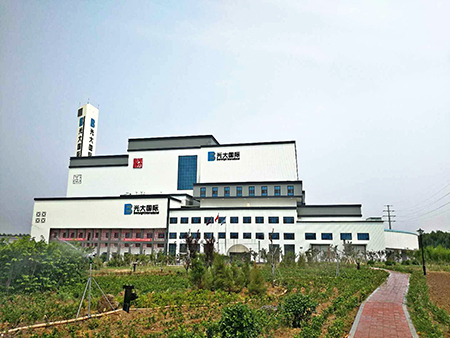
Zouping Waste-to-energy Project Phase I has a designed daily waste processing capacity of 700 tonnes. As one of the key construction project in Binzhou City, the construction work of the project was awarded as the “Excellent Construction Site for Construction Safety and Standards in Shandong Province”.
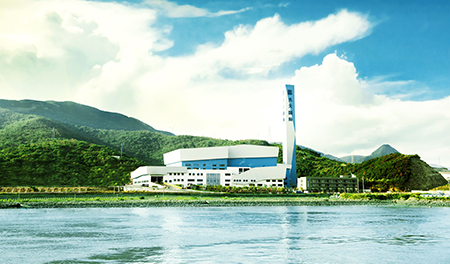
Ningbo Waste-to-energy Project Phases I and II have a combined designed daily waste processing capacity of 1,500 tonnes. Being awarded as the national AAA-rated waste-to-energy project and the AAA-rated waste-to-energy project in Zhejiang Province, the project is Everbright Environment's first project in Zhejiang Province, and has successfully set an industry benchmark in the province. It was awarded "China's Green Development Benchmark Project" and "The First Waste-to-energy Project to Receive an AAA Grade for Grate Furnace Techniques in Zhejiang Province". It has become a new landmark within the coastal area along the East China Sea.
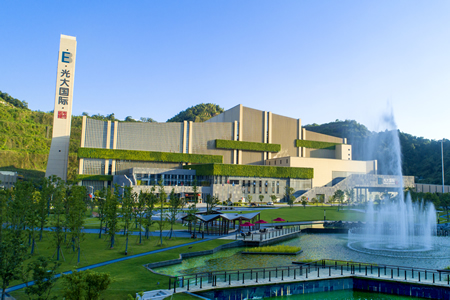
Hangzhou Waste-to-energy Project has a designed daily household waste processing capacity of 3,000 tonnes. From the start of construction to the completion of the courtyard-style waste-to-energy project, the project serves as a good example of quelling the "Not in My Back Yard" (NIMBY) effect and having a positive impact on the neighboring communities, making the project a world-class benchmark.
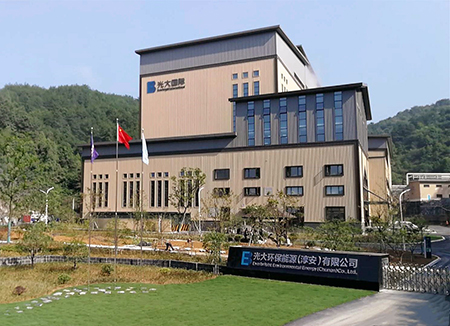
Chun’an Waste-to-energy Project Phase I has a designed daily waste processing capacity of 300 tonnes. Equipped with Everbright Environment’s self-developed household waste incineration facilities, the project provides a set of solutions concerning the integrated treatment of household waste in Chun’an County.
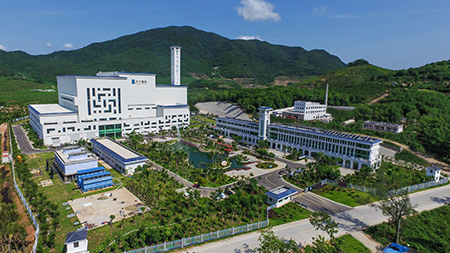
Sanya Waste-to-energy Project Phase I and II have a combined designed daily waste processing capacity of 1,050 tonnes. Being awarded as the national AAA-rated waste-to-energy project, it was the first project to receive investment from Everbright Environment in Hainan Province, and stands out as a key construction project in Sanya City and Hainan Province. It was awarded the "PPP Demonstration Project" status by the Ministry of Finance of the People's Republic of China and won the "Hainan Province Construction Projects Green Island Cup", among other awards.
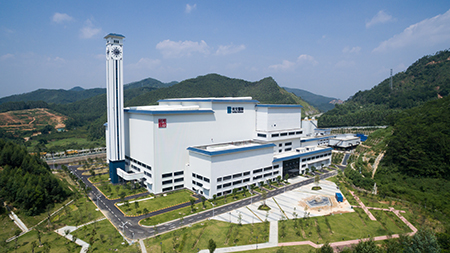
Boluo Waste-to-energy Project Phase I and II have a total designed daily waste processing capacity of 1,050 tonnes. Being awarded as the national AAA-rated waste-to-energy project, the project is a leading modern environmental protection education hub and ecological and environmental protection park in China that embodies the Lingnan culture and integrates the functions of environmental education, environmental culture and green tourism.
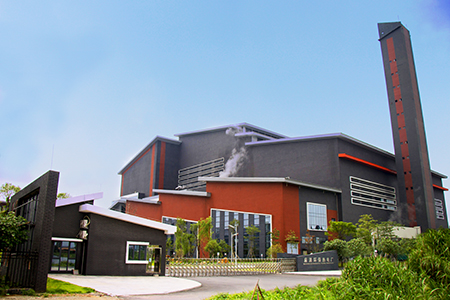
Dongguan Machong Waste-to-energy Project has a designed daily waste processing capacity of 1,500 tonnes. It is Everbright Environment's first "dual-entrusted" (entrusted construction and entrusted operation) project.
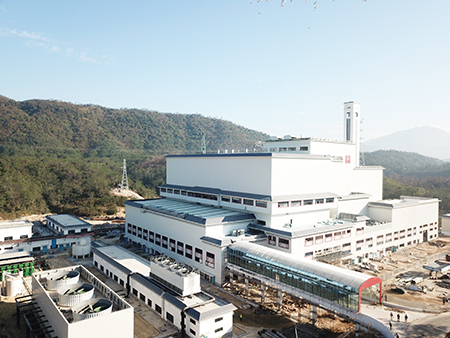
Huidong Waste-to-energy Project Phase I and II have a designed daily waste processing capacity of 1,200 tonnes. The project is a major environmental protection project that helps to improve the local ecological environment and is also an environmental science popularisation and education hub.
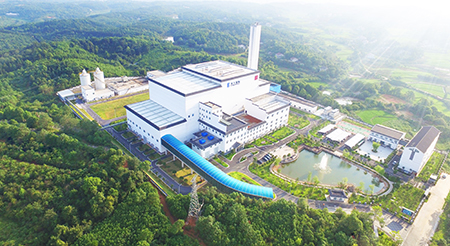
Yiyang Waste-to-energy Project has a designed daily waste processing capacity of 800 tonnes. It is the first environmental protection project that has received investment from Everbright Environment in Hunan Province, and stands as a key provincial project related to the supply of water and natural gas as well as treatment of waste water and waste; a PPP demonstration project of the Ministry of Finance and the National Development and Reform Commission of the People's Republic of China; and a benchmark waste-to-energy project in Hunan Province.
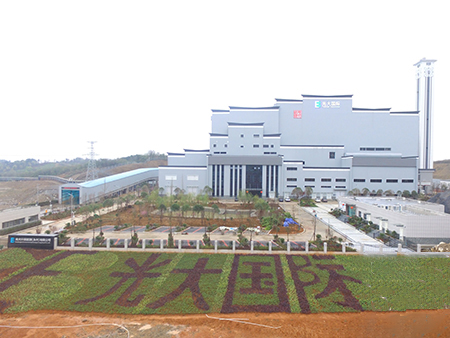
Yongzhou Waste-to-energy Project Phase I has a designed daily waste processing capacity of 800 tonnes. It is one of the "Top Priority Projects" of the local government in Hunan Province to protect and remediate the Xiang River, and stands as a key project to tackle Yongzhou City's "Six Battles". It has been listed among the second batch of PPP demonstration projects by the Ministry of Finance of the People's Republic of China and as a major provincial and municipal project.
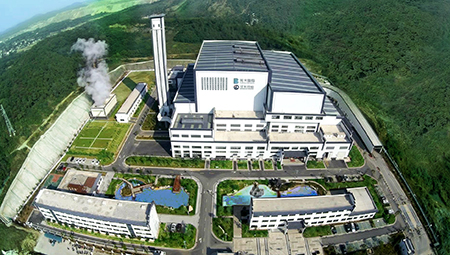
Ma'anshan Waste-to-energy Project Phase I has a designed daily household waste processing capacity of 800 tonnes. The project combines the simplicity of Anhui Province with modern design elements, and adopts cutting-edge technology as well as high waste-to-energy industry standards. It is a project that integrates different cultures and achieves a harmony between humanity and the environment.
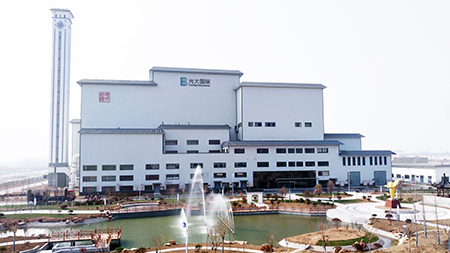
Lankao Waste-to-energy Project Phase I has a designed daily household waste processing capacity of 600 tonnes. Lankao County, the birthplace of the spirit of Jiao Yulu, is regarded as a key location by the Communist Party of China to promote its "mass line" education campaign under the leadership of President Xi Jinping. The project is the first county-level waste-to-energy project to commence operation in Henan Province, as well as one of the nine veinous industrial parks within the province. It is also a demonstration project on China's new energy revolution in rural and county areas.
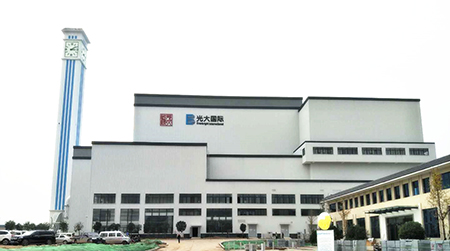
Xinzheng Waste-to-energy Project Phase I has a designed daily household waste processing capacity of 1,000 tonnes. It is Everbright Environment's first waste-to-energy project in Henan Province. It has been awarded the 2016 Class A Key Project of Henan Province, and ranked among the 2017 Xinzheng County "Top 10 Public Welfare Projects". It has become Henan Province's new landmark project with the integration of environmental education and industrial tourism.

Vietnam Can Tho Waste-to-energy Project has a designed daily waste processing capacity of 400 tonnes. It is Everbright Environment's first waste-to-energy project in the overseas market, and marks an important milestone in Everbright Environment's development in Vietnam's solid waste treatment market. The project's core equipment will adopt Everbright Environment's self-developed apparatus. It has become Vietnam's first advanced waste-to-energy project in operation.
Projects in Construction
| Project | Daily Waste Processing Capacity (tonnes) |
Investment (RMB million) |
|---|---|---|
| Jiangsu Province | ||
| Suzhou Waste-to-energy Project Phase IV | 3,300 | 3,320 |
| Wujiang Waste-to-energy Project | 3,000 | 1,700 |
| Pei County Waste-to-energy Project | 300 | 200 |
| Lianyungang Donghai Waste-to-energy Project | 600 | 418 |
| Shandong Province | ||
| Shouguang Waste-to-energy Project Phase II | 400 | 240 |
| Weifang Waste-to-energy Project Phase III | 1,000 | 403 |
| Tengzhou Waste-to-energy Project Phase II | 400 | 153 |
| Weishan Waste-to-energy Project Phase I | 600 | 422 |
| Yucheng Waste-to-energy Project Phase I | 600 | 444 |
| Zhucheng Waste-to-energy Project Phase I | 500 | 374 |
| Xiajin Waste-to-energy Project Phase I | 600 | 382 |
| Laoling Waste-to-energy Project | 1,000 | 590 |
| Dongping Waste-to-energy Project | 500 | 375 |
| Yangxin Waste-to-energy Project | 500 | 358 |
| Hunan Province | ||
| Yiyang Eastern Waste-to-energy Plant Expansion Project | 600 | 375 |
| Xinhua Waste-to-energy Project Phase I | 700 | 588 |
| Yongzhou Eastern Waste-to-energy Project | 600 | 447 |
| Liaoning Province | ||
| Liaoyang Waste-to-energy Project Phase I | 1,200 | 812 |
| Shaanxi Province | ||
| Fuping Waste-to-energy Project | 600 | 360 |
| Guangdong Province | ||
| Wuhua Waste-to-energy Project Phase I | 700 | 468 |
| Lechang Waste-to-energy Project Phase I | 700 | 588 |
| Henan Province | ||
| Ruzhou Waste-to-energy Project Phase I | 700 | 377 |
| Jiangxi Province | ||
| Yingtan Waste-to-energy Project | 1,000 | 553 |
| Jiujiang Waste-to-energy Project | 2,250 | 1,270 |
| Xiushui Waste-to-energy Project Phase I | 600 | 427 |
| Tianjin | ||
| Xiqing Waste-to-energy Project Phase I | 2,250 | 1,877 |
| Beichen Waste-to-energy Project Phase I | 2,250 | 1,579 |
| Beichen Waste-to-energy Project Phase II | 750 | 265 |
| Hainan Province | ||
| Tunchang Waste-to-energy Project | 600 | 390 |
| Sanya Waste-to-energy Project Expansion | 1,200 | 640 |
| Danzhou Waste-to-energy Project Phase I | 1,000 | 640 |
| Dongfang Waste-to-energy Project Phase I | 800 | 520 |
| Zhejiang Province | ||
| Ningbo Ninghai Waste-to-energy Project | 1,000 | 720 |
| Shengzhou Waste-to-energy Project Phase I | 800 | 570 |
| Jiangzhan Waste-to-energy Project Phase I | 400 | 330 |
| Fuyang Waste-to-energy Project Phase I | 1,500 | 1,376 |
| Hubei Province | ||
| Xiaochang Waste-to-energy Project | 600 | 348 |
| Anhui Province | ||
| Ma'anshan Waste-to-energy Project Phase II | 400 | 138 |
| Hebei Province | ||
| Xian County Waste-to-energy Project | 600 | 350 |
| Gansu Province | ||
| Wuwei Waste-to-energy Project | 800 | 640 |
籌建項目









